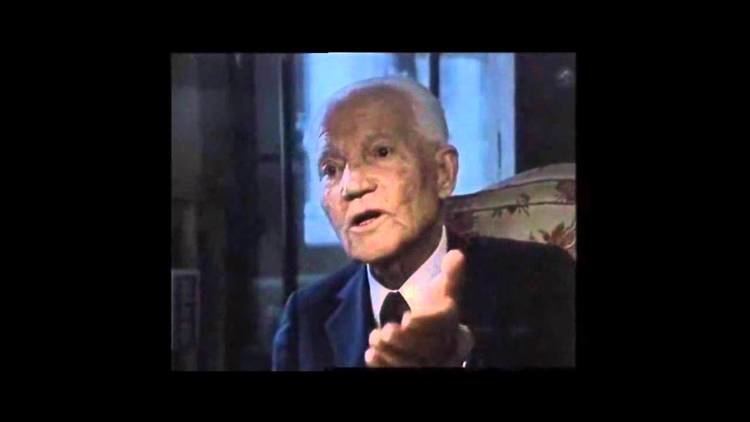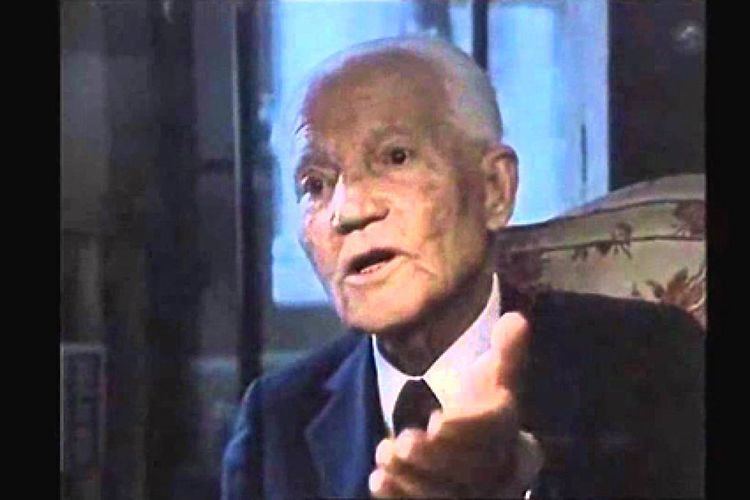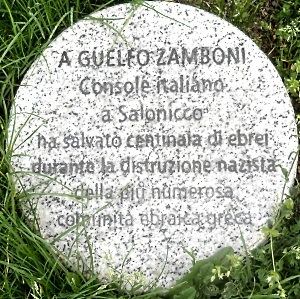Name Guelfo Zamboni | ||
 | ||
Guelfo zamboni un giusto italiano
Guelfo Zamboni (1897–1994) was an Italian diplomat who saved hundreds of Jews during the Holocaust.
Contents
- Guelfo zamboni un giusto italiano
- Luigi zazzeri ricorda guelfo zamboni al giardino dei giusti di milano
- Early life
- Rescuing the Jews of Thessaloniki
- Post war
- References

Luigi zazzeri ricorda guelfo zamboni al giardino dei giusti di milano
Early life

Guelfo Zamboni was born at Santa Sofia, then part of Tuscany. The last of eight sons, he belonged to a family devoted to handicrafts. His parents wanted him to become a clergyman, but they died early in his life and left him an orphan. He decided to attend school when he became older and faced the hardship of earning a living while studying. At 19 he fought as an infantryman in World War I, from 1916 to 1918, and was honored with a Bronze Medal of Military Valor and a War Merit Cross as he had been seriously wounded.

After the war he received a degree in Economics and Trade. In 1925 he took the exam that began him in his diplomatic career. He would be an associate of Baron Bernardo Attolico, the Italian Ambassador in Berlin, and learned and became fluent in German.
Rescuing the Jews of Thessaloniki
In 1942 Zamboni was appointed Consul General for Italy in Thessaloniki, a town occupied by Nazi Germany.
At that time, Thessaloniki hosted the world's largest community (56,000) of Sephardic Jews, many of Italian descent. In June 1942, the Einsatzstab Reichsleiter Rosenberg began the systematic confiscation of the town's archives, libraries, and manuscripts, all of which were sent to the Institute for Jewish Studies in Frankfurt am Main. Between March and August 1943 the Germans deported nearly all of Thessaloniki's Jewish population to concentration and death camps.
Zamboni could not have prevented the tragedy, but he did everything he could to rescue Italian Jews. He also managed to extend provisional Italian citizenship to 280 Greek Jews. These certificates of Italian nationality, with the handwritten mark "provisional", were handed to many people who did not speak or understand Italian, made quasi-legal by claiming distant relatives. He later said:
I know they were false papers, but I marked them with the writing «provisional» waiting for a confirmation!
Their number eventually reached 350. Zamboni thus saved them from deportation as well.
Zamboni left Thessaloniki on 18 June 1943 to return to Rome. His work in rescuing Jews was continued by his successor, Giuseppe Castruccio. Castruccio would later organize a «rescue train» that transported Jews with Italian passports to Athens, which at that time was under Italian occupation.
Zamboni's behaviour was observed by one of his coworkers, Captain Lucillo Merci, a liaison officer with the German forces and the author of a detailed diary of those events.
Post war
After the war's end Zamboni was put in charge of diplomatic missions in Baghdad and in Thailand. He was the Italian Ambassador to Thailand until 1961.
In 1992 the State of Israel awarded Guelfo Zamboni with the title of Righteous among the Nations. He was thus awarded a place in Jerusalem's "Yad Vashem". In 2002 the then Israeli Ambassador in Italy, Ehud Gol, traveled to Santa Sofia to place a stone in Zamboni's memory.
Guelfo Zamboni never asked for recognition of his aid and remained quite unknown in Italy until the eve of his 95 birthday (1992), when he gave his first interview after being awarded the title of "Righteous among the Nations". In 2008 the Italian Embassy in Athens published the book Ebrei di Salonicco 1943, i documenti dell'umanità italiana, edited by Antonio Ferrari (Corriere della Sera), Alessandra Coppola (University of Padua), and Jannis Chrisafis (a Greek journalist). This book reports the telex sent to Rome by Zamboni. His story also inspired the theatrical work Salonicco '43 by Ferdinando Ceriani, Gian Paolo Cavarai and Antonio Ferrari, previewed at the University of Tel Aviv on 23 September 2008 during a celebratory evening organized by the Italian Cultural Institute.
